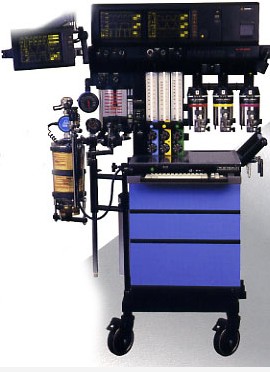D
deleted171991
Nope, those are real murderers.Actually real men shoot 120 mm

-bsd
Nope, those are real murderers.Actually real men shoot 120 mm

-bsd
If I may point out that you cannot base your decisions on an article from 1998, when prices might have been much different (there was no generic sevo).
The truth is that, where money is an issue, people tend to use sevo (plus nitrous) to achieve almost the same outcomes as with Des. What is really unfortunate is that I see more and more academic programs restricting Des, which is a crime against resident education.
Anyway, for LMA cases SEVO is the superior agent but for the obese or elderly DES wins hands down. POD is convinced DES is the way to fly for his cases so until he does a few thousand with SEVO his mind is made up.
It's funny how we are debating so fercously the pros and cons of two extremely good anesthesic gases. Its not like one is head and shoulders above the other. I prefer DES but I can use Sevo any time and vice versa, as everyone else here can do. And most observers would have a very difficult time determining which agent was used. I think we would be better at determining which induction agent (propofol vs etomidate or STP) was used actually. But I apreciate the discussion nonetheless.
Not so much at my altitude.I might add that low dose Sevo (1/3 Mac) COMBINED WITH 60-70% NITROUS will almost match DES for wake-up speed in many situations. Des is the better agent in terms of emergence/Wake-up but the low dose SEVO with Nitrous runs a close second for the last 15 minutes of the case.
I appreciate POD's input on the topic but I think we can all move on.
http://anesthesiology.pubs.asahq.org/article.aspx?articleid=1933493
MOCA minute question calls neuromuscular relaxation an "absolute" contraindication to Pressure Support Mode.Why not???
Of course it is. Proper muscle relaxation, not 4/4 TOF.^^ Therein lies one of the many problems with the MOCA minute (another is that I've had that question three times out of the sixty I've done so far). No one who has practiced in the modern era would think having any degree of neuromuscular blockade at all was absolute contraindication to PSV.
Sent from my SM-G920V using SDN mobile
^^ Therein lies one of the many problems with the MOCA minute (another is that I've had that question three times out of the sixty I've done so far). No one who has practiced in the modern era would think having any degree of neuromuscular blockade at all was absolute contraindication to PSV.
Sent from my SM-G920V using SDN mobile

Definitely my kind of machine. I hate touch screens or multifunction knobs; dedicated knobs are safer and faster.Best Anesthesia Machine ever invented (even with its simple ventilator):


It would be a contraindication if the muscle relaxation was so profound that the diaphragm was not even able to move to trigger pressure support, but if the patient is still able to trigger the vent then you can adjust your pressure support to give whatever tidal volume you want.MOCA minute question calls neuromuscular relaxation an "absolute" contraindication to Pressure Support Mode.
I understand that we have a backup rate set so this is moot. But you see were my question comes in.
Most anesthesiologists work with CRNAs, so what is safe with us might not be safe with them. Would you let the average CRNA put a muscle-relaxed patient on PSV?It would be a contraindication if the muscle relaxation was so profound that the diaphragm was not even able to move to trigger pressure support, but if the patient is still able to trigger the vent then you can adjust your pressure support to give whatever tidal volume you want.
Obviously the minute question assumes that we are idiots and would paralyze a patient profoundly and then sit there and wait hoping they will trigger the vent on pressure support mode!
Was that the CRNAs minute question?
Definitely my kind of machine. I hate touch screens or multifunction knobs; dedicated knobs are safer and faster.
As an attending, I used to work with this 3-dial old analogic propofol pump, with exchangeable faceplates for various medications, a different one for every medication. What a pleasure, compared to the "smart" infusion pumps of my residency, which were designed to bureaucrat specifications.
German technology... need I say more?Yep. That's what I used in the early 1990s. Simple and effective,
You mean like Volkswagen Diesel?German technology... need I say more?
I'm not suggesting that Mortality would be any different in the study above regardless of the volatile agent; but, one could certainly postulate that Sevoflurane or Isoflurane may have had a positive impact in reducing morbidity postop.
I use Sevoflurane in this subgroup of patients based on the available clinical data to this point.

